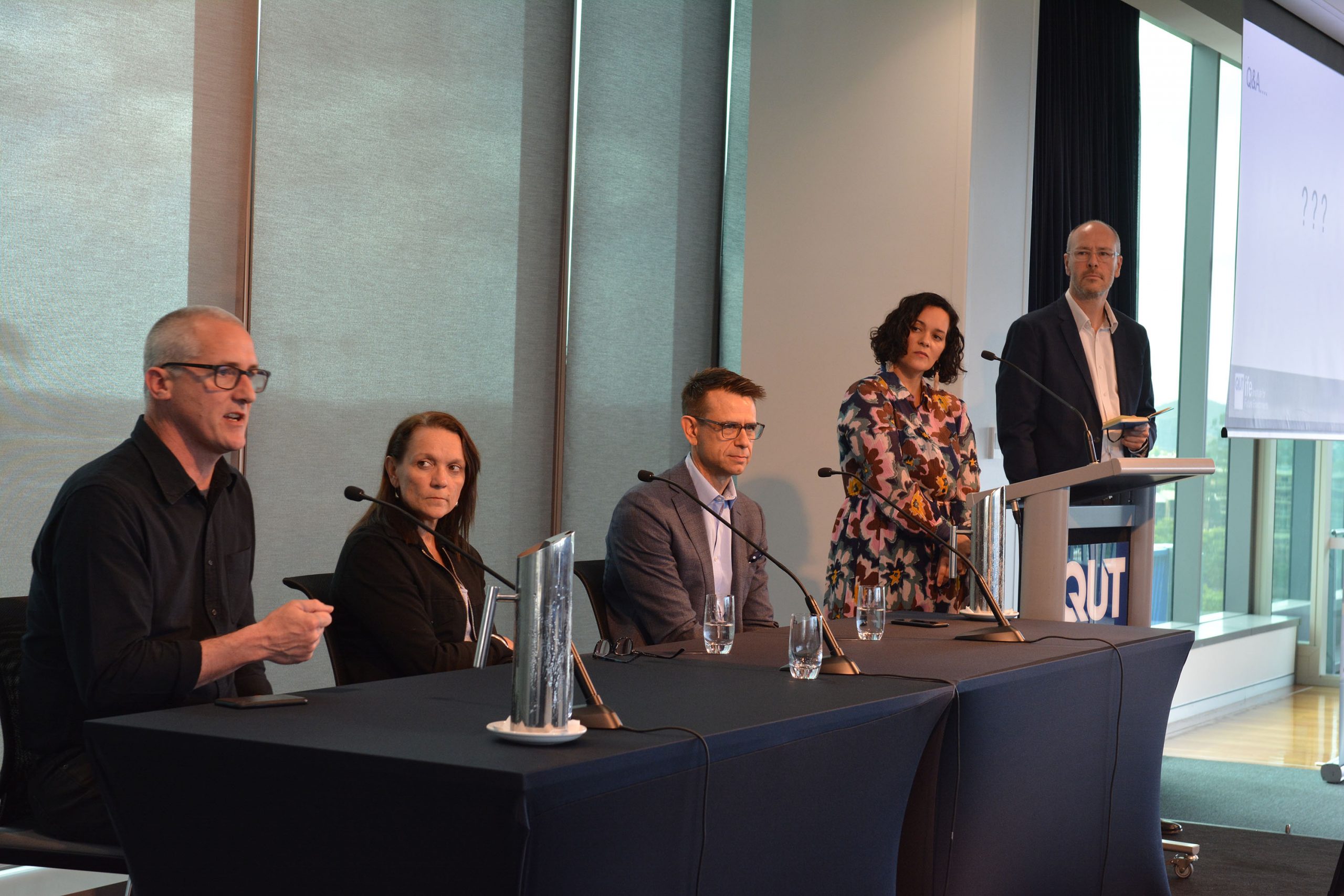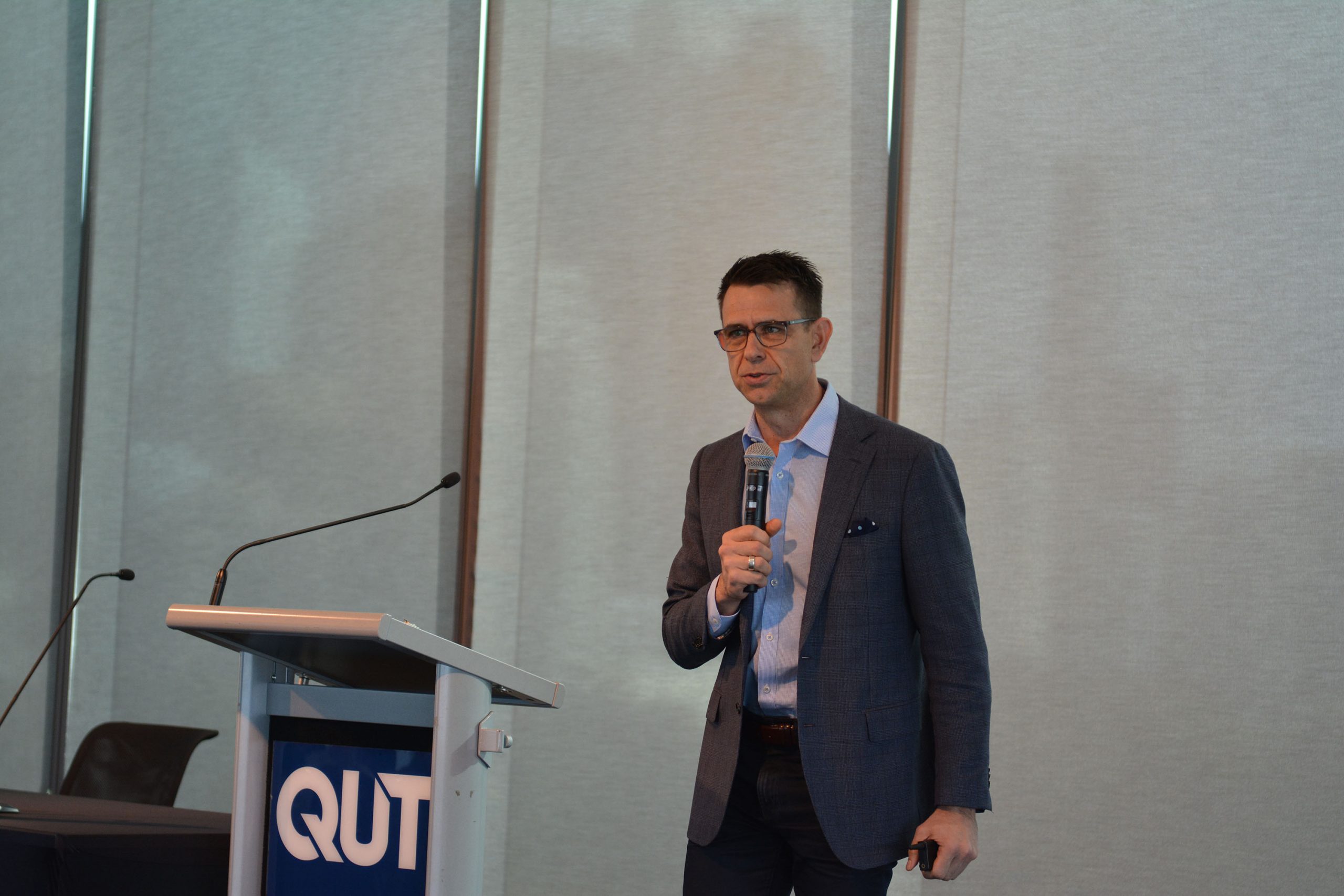INDUSTRY 4.0 | THE FUTURE OF WORK

As we gear-up for digital disruption, the future of how we will live and
work in Australia is uncertain. Artificial Intelligence and developments around robotic and autonomous
systems of Industry 4.0 offer opportunities to rethink human/robot interaction. Design Robotics brought together
academia, industry and government to this IFE Future of Working
And Living Breakfast to have a connected and dynamic
discussion about the development of skills, training and the question of how to shape future technologies.
Hosted by QUT’s Institute for Future Environments and the Design Lab, the session began with the Hon.
Cameron Dick, Minister for State Development, Infrastructure and Planning, began by reiterating the
Palaszczuk Government’s vision
of the advanced manufacturing sector to be an international leader by 2026 as evident by the ARM Hub partnership.

Future of Working and Living
The session began with Dr Sean Gallagher discussing how key exponential digital technology, digital hyperconnectivity and digital ecosystems is changing the face of work. He went on to discuss how digital technologies are going to take on routine and predictable tasks but the current mindset is unable to envision that future work will focus on creativity and innovation. This was illustrated through various examples such as UAP’s work with robots, remote mowing systems and a telecom company that has a specialised ‘disruption ready’ workgroup. He ended his talk with 10 ways to Reimagine Work, which included having agile flat-structured working groups, a risk-taking and resilient mindset and most importantly, that ‘ideas’ are going to be the most valuable feature of future work.
Labour in the digital economy: A looming crisis of (in)decent work?

Prof Paula McDonald discussed the precariousness of decent work with the rise of gig
work in the digital age. While the talk covered the dichotomy of technology i.e. where the price of being
connected is the loss of privacy, she documented ways that workers were resisting being monitored and
surveilled. She concluded her talk by recognizing that as future work gets diverse and individualised, it
is important to ensure standards of decent work and job security.
Design Robotics: UAP’s Collaboration between IMCRC, QUT, RMIT

This talk showcased UAP’s collaboration with the IMRC, QUT, RMIT on the Design Robotics for
Mass Customisation Manufacturing project (2017-2022), to use innovative robotic vision systems and
software user-interfaces to reduce the integration time between
design and custom manufacturing. Matthew Tobin championed the use
of cross-reality technologies such as Virtual Reality (VR) and Augmented Reality (AR) in manufacturing to
reduce waste, empower creative design and support shorter delivery times.
Q&A
IFE FUTURE OF WORKING AND LIVING BREAKFAST
Website | Eventbrite
Date: Wed 2nd October 2019
Time: 7am-9am
Venue: QUT Design Lab, Gardens Point.